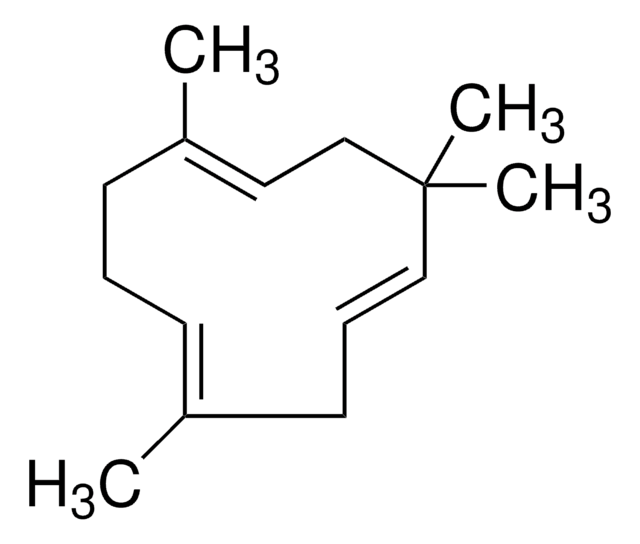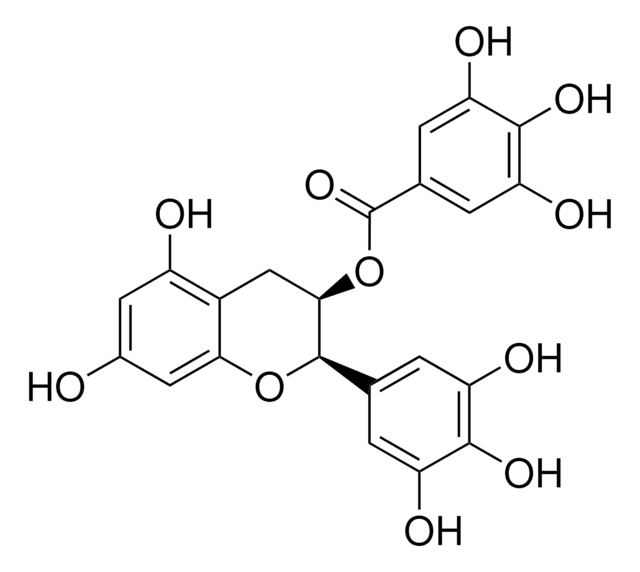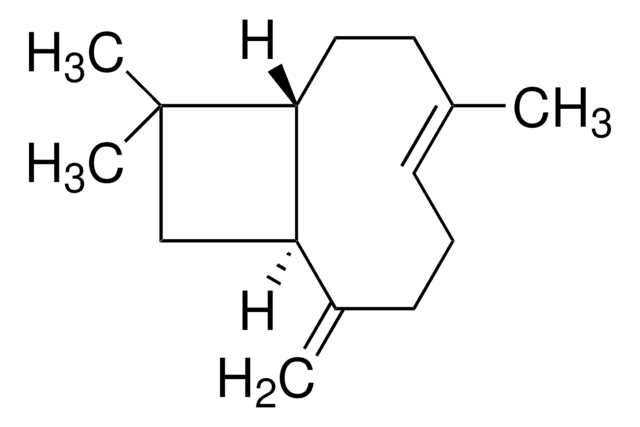X0379
Xanthohumol
powder, ≥96% (HPLC)
Synonym(e):
(E)-1-[2,4-Dihydroxy-6-methoxy-3-(3-methyl-2-butenyl)phenyl]-3-(4-hydroxyphenyl)propenone, 2′,4,4′-Trihydroxy-6′-methoxy-3′-prenylchalcone
About This Item
Empfohlene Produkte
product name
Xanthohumol from hop (Humulus lupulus), ≥96% (HPLC)
Biologische Quelle
plant (Humulus lupulus)
Assay
≥96% (HPLC)
Form
powder
mp (Schmelzpunkt)
172 °C
Löslichkeit
ethanol: 10 mg/mL
Lagertemp.
2-8°C
SMILES String
COc1cc(O)c(C\C=C(/C)C)c(O)c1C(=O)\C=C\c2ccc(O)cc2
InChI
1S/C21H22O5/c1-13(2)4-10-16-18(24)12-19(26-3)20(21(16)25)17(23)11-7-14-5-8-15(22)9-6-14/h4-9,11-12,22,24-25H,10H2,1-3H3/b11-7+
InChIKey
ORXQGKIUCDPEAJ-YRNVUSSQSA-N
Allgemeine Beschreibung
Anwendung
- to treat glioblastoma cells to test its effect on inducing apoptosis
- to test its protective effect in renal ischemia/reperfusion (I/R) injury
- as a component of Dulbecco′s modified Eagle medium (DMEM) to test its antiviral activity in Huh7.5 cells infected with hepatitis C virus cell culture (HCVcc) system
Biochem./physiol. Wirkung
Lagerklassenschlüssel
11 - Combustible Solids
WGK
WGK 3
Flammpunkt (°F)
Not applicable
Flammpunkt (°C)
Not applicable
Persönliche Schutzausrüstung
Eyeshields, Faceshields, Gloves
Analysenzertifikate (COA)
Suchen Sie nach Analysenzertifikate (COA), indem Sie die Lot-/Chargennummer des Produkts eingeben. Lot- und Chargennummern sind auf dem Produktetikett hinter den Wörtern ‘Lot’ oder ‘Batch’ (Lot oder Charge) zu finden.
Besitzen Sie dieses Produkt bereits?
In der Dokumentenbibliothek finden Sie die Dokumentation zu den Produkten, die Sie kürzlich erworben haben.
Artikel
Chronic inflammation is an underlying factor in the development and progression of many of the chronic diseases of aging, such as arthritis, atherosclerosis, diabetes, and cancer.
Unser Team von Wissenschaftlern verfügt über Erfahrung in allen Forschungsbereichen einschließlich Life Science, Materialwissenschaften, chemischer Synthese, Chromatographie, Analytik und vielen mehr..
Setzen Sie sich mit dem technischen Dienst in Verbindung.





